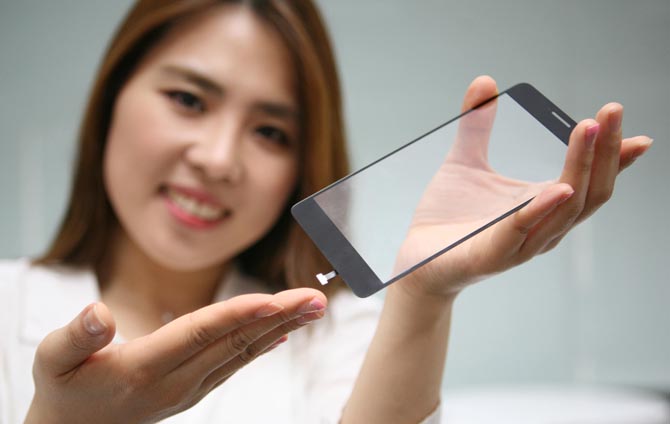Apple’s ‘iPhone 7’ hasn’t arrived yet but that hasn’t stopped analysts from predicting that an ‘iPhone 8’ will ditch the iconic Home button. Conventional wisdom has it that 3D Touch will simulate Home button presses while fingerprint recognition should be realized by incorporating the Touch ID sensor into the display itself.
What conventional wisdom doesn’t help explain is how such a technology might work. Well, now we know: LG announced its Innotek division has achieved a major technological breakthrough in producing the world’s first in-screen fingerprint scanner.
“LG Innotek cut a shallow furrow of 0.01 inches (0.3 mm) thick on the lower backside of the cover glass and installed the fingerprint sensor inside of it with using their supreme precision and combination technology,” explains the company.
A fingerprint reader from the movies
The sensor is attached to the cover glass with LG’s proprietary adhesive which has high impact absorption. While the adherent side of the sensor and glass is only 0.0098 inches (0.25mm) thick, it’s capable of withstanding the impact of 4.6 oz, or 130 grams of the steel ball dropped from 7.9 inches, or approximately 20cm high.
“With this module, the sensor is not exposed to the outside of the device, so manufacturer can produce a sleek designed smartphone,” said the Korean company. “Fingerprint recognition area also can be indicated by various patterns up to design of complete product.”
By positioning the fingerprint reader right under the cover glass, users can just place their finger on the screen to unlock their device. This technology also makes waterproofing easier because the sensor is not exposed to the outside of the device. Most importantly, this invention will help obsolete the physical Home button, arguably the iPhone’s biggest failure point (because it’s mechanical).
LG’s technology apparently works better with wet fingers than Apple’s Touch ID, allows for a higher recognition accuracy compared to the button type and has a lower false acceptance rate (FAR) at just 0.002 percent.
For those asking, FAR is the probability that the system falsely recognizes someone else’s biometric information as that of the user.
Will Apple use this tech?
This is a breakthrough iPhone users have been waiting for.
Removing the iconic Home button would help shrink the iPhone’s “chin,” a relatively large area below the display. As a result, an iPhone that didn’t have the physical Home button would be physically shorter while still packing a 4.7-inch or 5.5-inch display.
Both LG and its Innotek division have long been suppliers for Apple, but I’m not sure Apple will suddenly switch to LG’s in-screen fingerprint sensor after spending hundreds of millions of dollars to buy an Israeli firm that created Touch ID for them.
What’s important here is that a major Apple supplier has announced a major technological breakthrough that paves the way to an iPhone without the physical Home button that would sport a smaller overall footprint without having to shrink screen size.
According to LG, it “has a plan to secure the new customer” for its technology.
Source: LG
